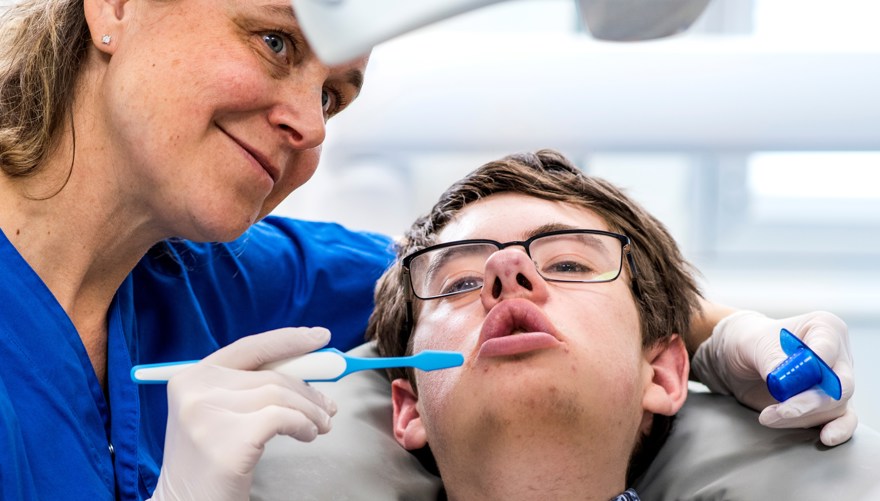Myotonic dystrophy type 1

This is the text from the oral care programme for people with myotonic dystrophy type 1 (DM1).
Mun-H-Center, a Swedish orofacial resource center for rare diseases and a specialist dental clinic, have many years experience from clinical treatment of patients with myotonic dystrophy type 1 (DM1). In this pamphlet we summarise the most important aspects of meeting and treating this group of patients.
Background
DM1 is an autosomal dominant neuromuscular disease, which means that one of the parents also has the disease. DM1 is caused by a mutation in the DMPK gene on chromosome 19.
The disease can be divided into four groups according to the age of onset: (1) congenital, (2) childhood onset, (3) classic and (4) mild forms. In general, the earlier the onset of the disease, the more severe are the symptoms. Muscles are affected to varying degrees, but other organs may also be affected. Common symptoms are muscle weakness, myotonia (rigidity in muscles after activa- tion), cardiac symptoms (pacemakers are common), cataracts, gastro-intestinal problems, endocrine symptoms, fatigue, breathing dif culties and impaired sight and hearing. Learning dif culties and behavioural disorders are common among those with an onset before ten, but onset during adulthood can also affect cognitive functions.
The disease is slowly progressive. Weak muscles in and around the mouth cause impaired facial expression and an open mouth at rest. Muscle weakness can affect facial growth, which can cause malocclusion. A high arched palate and open bite are common. Temporomandibular disorders may occur.
There is an increased sensitivity to many anaesthetics.
Dental Care for People with DM1
Risk factors for oral health
Most people with DM1 need regular and enhanced preventive dental care. There is an increased risk of developing oral diseases, such as caries and periodontitis. Reasons include food remaining in the oral cavity, dryness in the mouth, frequent intake of simple carbohydrates when short of energy, dif culties in carrying out effective oral hygiene due to motor limitations and tiredness.
Advice for dependents and carers
Young people and adults with DM1 may also need assistance from dependents and carers in carrying out oral care. To do this in the best way, they need practical guidance from the dental care and access to oral care equipment.
Printed version
If you want more guidance about dental treatment and oral care for those with myotonic dystrophy, or if you have any comments on the content of the oral care programme, please contact us at mun-h-center@vgregion.se, +46 10 - 441 79 80.
About the publication
- Authors: Annette Carlsson, Dental Hygienist, and Åsa Mårtensson, Specialist Dentist in Oral Medicine, Mun-H-Center
- Layout and photographs: Inga Svensson, Communicator, Mun-H-Center
- Printed: 2019
Other languages
- Swedish - change language in the top menu to go to the Swedish website.